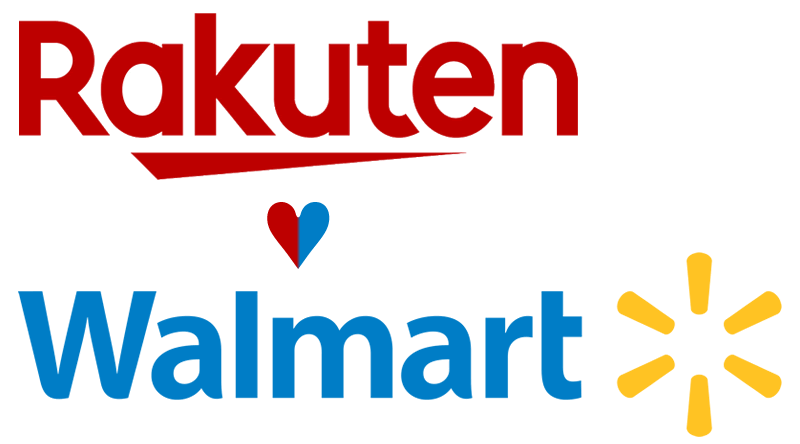The Web Retailer News Digest for March 26th, 2021
In a perhaps inevitable turn of events, Walmart has removed rules requiring third-party sellers on its marketplace to be US-registered businesses. The world’s largest retailer is now taking on Amazon in the battle to court Chinese sellers, reports Bloomberg. Businesses from China account for an estimated 39% of sales on the Amazon marketplace in the US, and over 50% in Canada and Spain.
Previously, sellers on Walmart were required to have a US address and tax registration. With these requirements removed, we might see a flood of Chinese manufacturers onto the site in the future. However, the expansion looks set to start with a trickle of new sellers at first, as Walmart aims to admit a limited number of international businesses, all vetted by its global trust and safety team.
This development will certainly benefit Walmart in increased sales volume, and shoppers also stand to gain from an increased selection of affordable products to choose from. But what does it mean for domestic US businesses selling on Walmart? If the Amazon marketplace is anything to go by, it will become impossible for domestic sellers to compete in many product categories.
Rolling out the red carpet to Chinese sellers
What is certain is that this policy change by Walmart is a direct attempt to compete with Amazon for Chinese manufacturers. As Amazon US sellers are aware, many Chinese companies sell directly on the marketplace using FBA, with their products stored in domestic warehouses for easy fulfillment. China-based businesses made up 28% of new sellers in 2019. That percentage swelled to 63% by January 2021.
Before this announcement, Walmart sellers had found the marketplace to be a “safe haven” against the tide of Chinese products that have flooded the Amazon Marketplace. This deluge of Chinese factories made Amazon even more competitive and cutthroat on pricing than before. US sellers at least knew they could compete against exclusively domestic sellers within the cozy confines of Walmart’s space.
Now the question is, will Walmart’s marketplace turn from being focused on US sellers to becoming the kind of international free-for-all found on Amazon? And what effect will that have on US sellers both short and long-term? Walmart’s vetting process might provide some protection in the short-term – but how long will that last before the floodgates are opened?
Read more at BNN Bloomberg.
Amazon news
Sellers can now add instruction manuals to product pages
In a move that is helpful to both sellers and customers, Amazon has announced that product documents such as instruction manuals, fact sheets, and CAD drawings can be added to product detail pages belonging to registered brand owners.
Previously, the product documents feature was only available to B2B sellers in the Amazon Business Seller program. According to Amazon:
Customers will benefit from this content pre-purchase to make shopping decisions and post purchase to make the most of the products that they buy. Brands can reduce customer service calls and product returns, and increase customer satisfaction via this program that is free and open to all brand owners.
The types of product documents allowed for upload are:
- 2D CAD
- 3D CAD
- Application guide
- Brochure
- Certificate of Analysis (CoA)
- Certificate of Compliance (CoC)
- Comparison chart
- Compatibility guide
- Emergency Use Authorization (EUA)
- EUA Amendment(s)
- FAQ
- Fact Sheet (Patient)
- Fact Sheet (Provider)
- Installation manual
- Instructions For Use (IFU)
- Safety data sheet
- Safety information
- Size guide
- Specification sheet
- Troubleshooting guide
- User guide
- User manual
- Other content
Detailed product content such as this will be a boon for sellers of technical or industrial products. Consumers will definitely find value in being able to easily secure an instruction manual or installation guide for products like car stereos. However, there has already been concern expressed by sellers about how this content may potentially be abused by “black hat” players, as well complaints about the broad latitude that Amazon has to accept or reject these documents when uploaded.
Seeing as product documents have already successfully been implemented in the Amazon Business Sellers program, it’s likely that the advantages for sellers will outweigh any potential negatives. As with all new marketplace features, it will be interesting to see how the policies and results shake out over time. For now, it’s time for sellers to create more valuable content for their product pages!
Read more at Amazon Seller Forums.
Amazon becomes top clothing retailer, beating Walmart
Newly released research by Wells Fargo has found that Amazon leapfrogged Walmart to become the #1 clothing retailer in the US in 2020. Fueled by the pandemic-driven ecommerce explosion, Amazon’s US sales of apparel and footwear skyrocketed to over $41 billion – which topped arch rival Walmart by nearly 25%.
Amazon’s fashion reach has grown from a diverse line of basic items to an increasing number of name brands, as well as luxury fashion shops. Helping it grow this year were stay-at-home orders related to the global pandemic, which decimated brick-and-mortar retailers and pushed a lot more retail online.
Along with their expanded inventory, Amazon’s new dominance in apparel and footwear was also helped by its Prime Wardrobe program. This gives shoppers an easy way to try on clothes and shoes, pay for what they keep, and return the rest. It replaces the changing room of physical stores for a quarantined clientele.

With almost 35% of the market, Amazon is continuing to improve its apparel and footwear shopping experience for consumers. Sellers in this niche have a great opportunity to capitalize on this growing trend. On track to surpass $45 billion in fashion sales in 2021, Amazon has certainly come a long way from selling only books.
Read more at CNBC.
Amazon India is the fastest-growing international marketplace
While we tend to give Amazon’s North American and European marketplaces a lot of attention, don’t sleep on Amazon India. Marketplace Pulse reported that India became Amazon’s second largest country marketplace last year, in terms of the number of sellers.
In 2020, Amazon.in grew its seller count by 29% and now boasts 750,000 sellers. India’s largest online marketplace doesn’t appear to be slowing down as we wrap up Q1 of 2021. Data analyzed by Finbold backs this up, finding that Amazon.in added nearly 30,000 new sellers to the ranks in the three months to March 2021 alone – accounting for 10.1% of all new Amazon sellers worldwide.
[script script=”{script id=’infogram_0_aff12c96-ea95-49e8-adef-5a81904ec5c6′ title=’The number of new sellers on Amazon Marketplace in 2021 By platform/region, as of March 21, 2021′ src=’https://e.infogram.com/js/dist/embed.js?XVO’ type=’text/javascript’}{/script}”]
Since launching in India in 2013, Amazon has been incredibly successful (after a brief “getting to know you” period). The continued expansion of ecommerce throughout India bodes well for the future.
For eager sellers looking to cash in on this growing phenomenon, it’s important to know that selling on Amazon.in is not open to brands based outside of India. A local distributor must be found if you want to sell your products there. Considering the potential opportunity, it may be worth looking into for brands with just the right products.
Read more at Finbold and Marketplace Pulse.
Other marketplaces
New eBay tool to help trading card sellers list faster
If you’re a sports fan, chances are you’ve been combing the attic and backs of closets recently looking for that old box of trading cards, which have seen an unprecedented resurgence during the pandemic. We should all be so lucky as to sell a “pristine condition” Kobe Bryant basketball card for nearly $1.8 million at auction, a new record set earlier this month.
eBay trading card sellers are the beneficiary of a new tool to help them list and sell their cards faster. It’s part of the eBay mobile app and uses AI computer vision to create listings in half the time, and will be available on iOS and Android. According to eBay:
[The tool] will support Magic the Gathering cards at launch and expand to Pokémon and Yu-Gi-Oh! in May, followed by sports trading cards and other collective card games later this year.
With the unbelievable upswing in trading card demand, it couldn’t come at a better time for sellers. eBay notes that four million more trading cards were sold on its platform in 2020 than the previous year – a startling 142% increase!
The surge has been attributed in part to, you guessed it, the pandemic, which has had the unintended result of many people sitting at home and selling or buying cards online. eBay’s 2021 State of Trading Cards report notes that the top three most popular card categories are, in order: Pokémon, basketball, and baseball. Who knew that Pikachu would be more popular than Michael Jordan?
Read more at eBay.
Rakuten Japan ropes in Walmart in the fight against Amazon
Japan’s ecommerce giant Rakuten has enlisted some help in its fight for ecommerce supremacy against Amazon. The Wall Street Journal reports that Rakuten has raised $2.1 billion in investment from a group of companies including Walmart, Japan Post, and China’s Tencent.
Each company offers a different element that will contribute to Rakuten’s competition with Amazon, who are neck-and-neck as the online marketplace leaders in Japan. While Rakuten itself is a far-reaching conglomerate whose diverse interests include banking, content, and communications services, it seemingly has brought aboard strategic investment partners. Japan Post offers logistics, while Tencent offers digital payments and a window into the Chinese market.
Walmart’s inclusion is most interesting. Walmart and Rakuten are both part-owners of Seiyu, one of Japan’s largest supermarket chains, and Walmart has a presence on Rakuten’s online marketplace. Could this be Walmart’s way of gaining a much larger foothold in Japanese ecommerce? And for Rakuten, is their enemy’s enemy really their friend?

Perhaps there’s a different play at hand. In India, Walmart entered the ecommerce marketplace via its purchase of Flipkart, allowing it to go head-to-head with Amazon on local terms. Could something similar be afoot in Japan?
When considering the future of the arrangement, it seems unlikely that Walmart will acquire Rakuten, owing to Rakuten’s massive size, diverse portfolio, and regional popularity. But the situation bears watching, if only out of curiosity to see what these two titans of ecommerce do next.
Read more at The Wall Street Journal.
Yahoo! to launch an online marketplace
In what for Western markets is something of a blast from the past, there’s been the announcement of Yahoo! Shops, an online marketplace being launched by brand owner Verizon Media. While many may be surprised to find that Yahoo! is still around, this is not its first venture into the ecommerce space.
In fact, there were many attempts in the past, none of which succeeded long-term – except one. Yahoo! Japan, now under completely separate ownership to the US-based Yahoo!, became a major force in Japanese ecommerce with Yahoo! Shopping – and still is to this day. Back in the US, last year Yahoo! started a partnership with Walmart that allows customers to shop within Yahoo! Mail.
Now Verizon Media plans to open its new Yahoo! Shops with an initial offering of 50 brands. What’s interesting for sellers is that Yahoo! Shops are seeking additional brands or businesses that would be a good fit – so send your expression of interest to Yahoo! here.
Read more at Retail TouchPoints and Commerce Corner.
Webinars coming up
For everyone
March 31: Critical Growth Strategies for Marketplace Sellers as Retail Stores Reopen (register here).
March 31: How to Actually Increase Your Amazon Traffic (register here).
All week: Amazon advertising’s global webinar program rolls on with 20+ webinars scheduled, covering Sponsored Products, Sponsored Brands, reporting, optimization and tips (register here).
For US sellers
March 30: Join the March eBay seller check-in to get the latest marketplace and product updates, tactical selling tips, and get your questions answered live.
March 31: Amazon Sponsored Products & Brands Workshop, a deep-dive on best (and worst) practices (register here).
April 5: Amazon keyword optimization for listings and ads (register here).
For UK sellers
March 29: Amazon – learn how to grow your sales by exporting into neighboring countries (register here).
March 30: UK & EU ecommerce VAT reforms: what you need to know (registration closed).
March 30: Amazon Brand Owner Education Series: Live Q&A – Get tips from a successful Amazon Brand Owner (register here).
March 30: Amazon – Brexit Frequently Asked Questions: Webinar for Self-Fulfilling Selling Partners (register here).
March 30: Learn about returns and reselling returned stock in local markets (register here).
March 30: How to sell more on eBay using eBay SEO (register here).
March 31: Amazon FBA Frequently Asked Questions Session (register here).
And finally
Amazon fulfillment center forced to close due to COVID-19 outbreak
In a story that should be of little surprise as we round the curve into Year Two of the pandemic, a major Amazon warehouse in Brampton, Ontario, Canada, has been closed due to a severe outbreak of COVID-19.
The Heritage Road facility, located outside of Toronto, was closed by Peel Public Health on March 12. All workers were ordered into a two-week isolation period and high-risk exposure for all workers was deemed likely. 622 confirmed cases were logged as of last week, according to Peel.
All shifts at the warehouse have been suspended, which is a large loss of logistics and manpower for Amazon’s local operations. Amazon says the closure could have a short-term impact on Canadian customers, and they are working to resolve the situation as quickly as possible.
The shutdown has also brought some controversy. Amazon does not believe the data supports the closure and is appealing the decision. An Amazon spokesman said that their testing indicated a sufficiently low positivity rate and little risk of spread in the facility, which puts them at odds with Peel’s determination. Efforts to resolve the issue are ongoing.
This story serves as a reminder that we are not out of the woods yet with the pandemic, and of the ongoing struggle to maintain normal business operations during unprecedented times. We at Web Retailer wish a speedy recovery to those afflicted by the virus, and hope this story serves as a reminder for all to stay vigilant, stay safe, and be well.
Read more at Toronto City News and Daily Hive News.

Leave a Reply